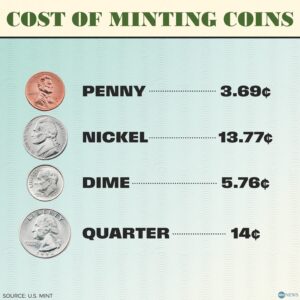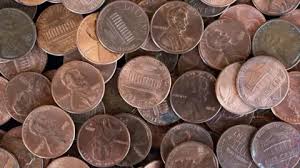The week of November 10th has been incredibly significant, marking the end of the forty-three-day-long government shutdown. With the restoration of the government comes the signing of a brand new bill shutting down the minting of any new pennies.

After 232 years of use, the penny has been put into retirement. It has long been considered an iconic American coin, but the rise of inflation and card-based payments has led to the coin losing relevance for the average American. Additionally, rising metal prices mean that it has become too expensive to produce new pennies. “For far too long the United States had minted pennies which literally cost us more than 2 cents,” said President Donald Trump in a Truth Social post back in February of this year. “This is so wasteful!”

The last ever penny was minted in Philadelphia on November 12th, which is where the first penny was minted back in 1793. This final penny is stamped with a unique omega mark, signifying its importance, and will be auctioned off as a relic in American history instead of entering circulation. The penny will join the numerous other discontinued coins of American history, including the half-cent, which was the previous coin to be retired in 1857. However, the penny’s retirement still begs the question- how will America adapt to the loss of the coin?
Here at Avonworth, students have had mixed opinions about the loss of the coin. “I’m chill with not having pennies,” said Julia Cernich, a junior. “I just end up probably throwing them away.” For many, Julia’s statement represents their personal opinion, or lack of an opinion, on the situation. With card-based payment methods being typical for most and goods costing more and more, many don’t have a need for the penny and its negligible value. Many, however, still see value in the little coin.
“I don’t like that pennies are done,” said junior Alexa Graves. “I think they’re useful for businesses, like when you’re giving change.” Elena Van Mater, another junior who works with the cash register at her part-time job, echoed this sentiment. “It’s kind of weird, cause how else are we gonna get change?”
Thankfully, the retirement of the penny doesn’t mean that pennies are disappearing altogether. In fact, an estimated 300 billion pennies are currently in circulation. Even if the penny is no longer being produced, it will remain a vital part of America’s economy for a long time to come.









I was concerned about not having pennies until I realized how many still exist in America today.
Very well written and give multiple perspectives on the retirement of the penny. Before reading this I didn’t even know that the penny was going to be retired.
It’s interesting to hear how the lack of pennies affects people working with change in a part-time job. This is an aspect/concern that some people likely don’t realize.
I strongly dislike all of the changes Trump is making. It’s not just the idiotic laws; it’s the sentimental things he’s getting rid of. I hate that the penny is no longer being made, though I can see where they’er coming from, but he destroyed a sentimental and important part of the white house. Very great article, though. It explains what happened perfectly and is easy to follow along with.